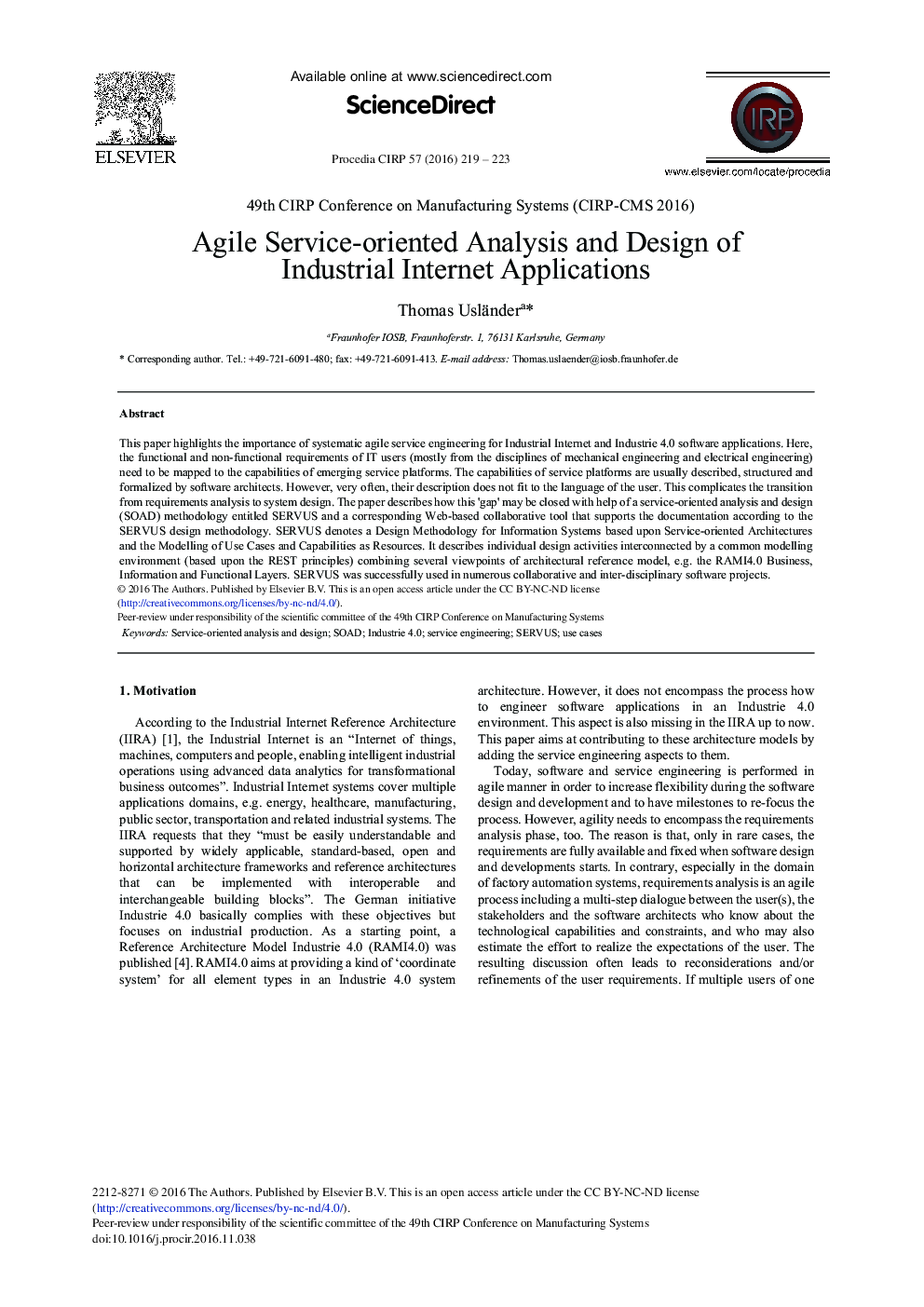| Article ID | Journal | Published Year | Pages | File Type |
|---|---|---|---|---|
| 5469821 | Procedia CIRP | 2016 | 5 Pages |
Abstract
This paper highlights the importance of systematic agile service engineering for Industrial Internet and Industrie 4.0 software applications. Here, the functional and non-functional requirements of IT users (mostly from the disciplines of mechanical engineering and electrical engineering) need to be mapped to the capabilities of emerging service platforms. The capabilities of service platforms are usually described, structured and formalized by software architects. However, very often, their description does not fit to the language of the user. This complicates the transition from requirements analysis to system design. The paper describes how this 'gap' may be closed with help of a service-oriented analysis and design (SOAD) methodology entitled SERVUS and a corresponding Web-based collaborative tool that supports the documentation according to the SERVUS design methodology. SERVUS denotes a Design Methodology for Information Systems based upon Service-oriented Architectures and the Modelling of Use Cases and Capabilities as Resources. It describes individual design activities interconnected by a common modelling environment (based upon the REST principles) combining several viewpoints of architectural reference model, e.g. the RAMI4.0 Business, Information and Functional Layers. SERVUS was successfully used in numerous collaborative and inter-disciplinary software projects.
Related Topics
Physical Sciences and Engineering
Engineering
Industrial and Manufacturing Engineering
Authors
Thomas Usländer,
